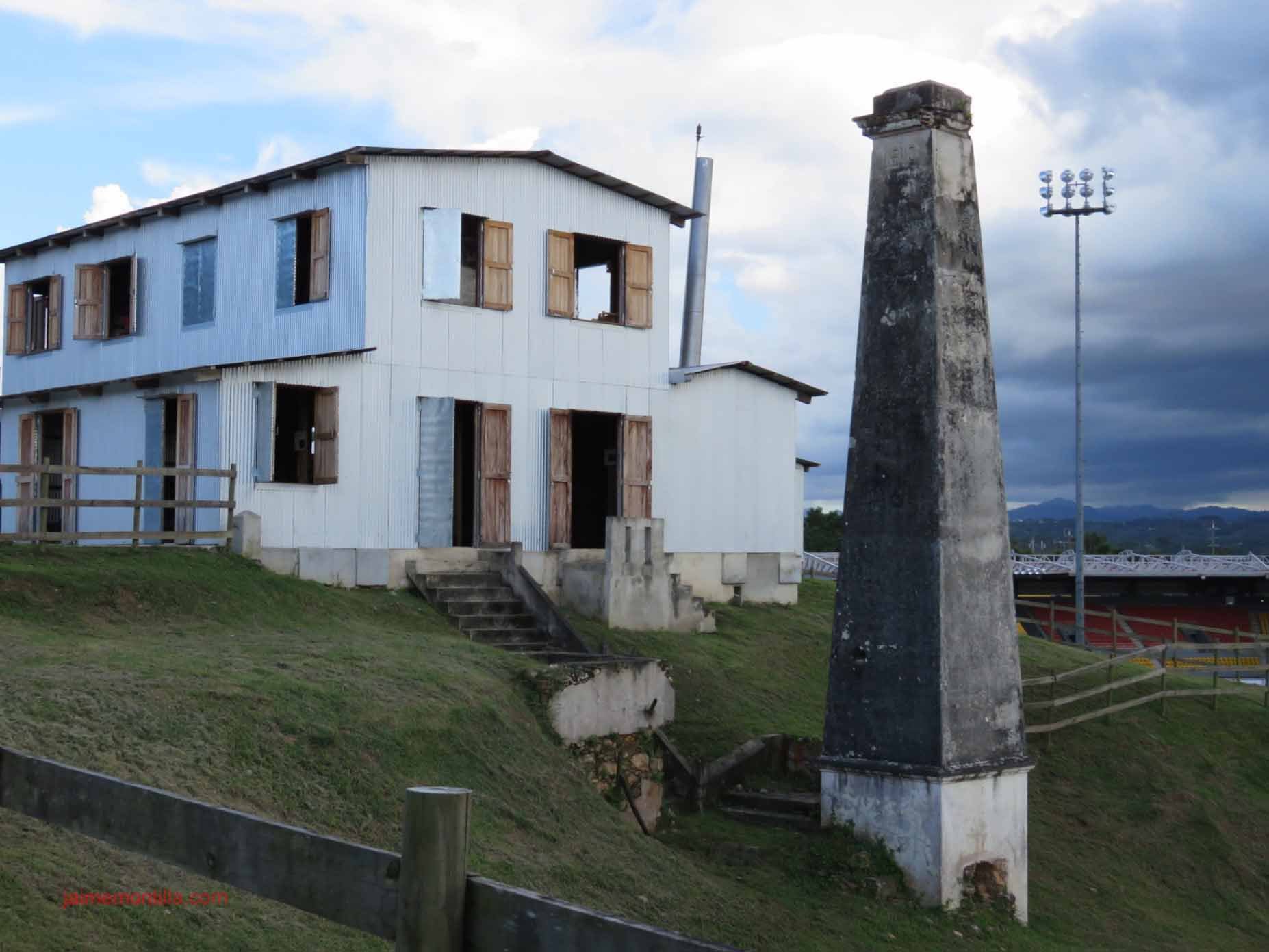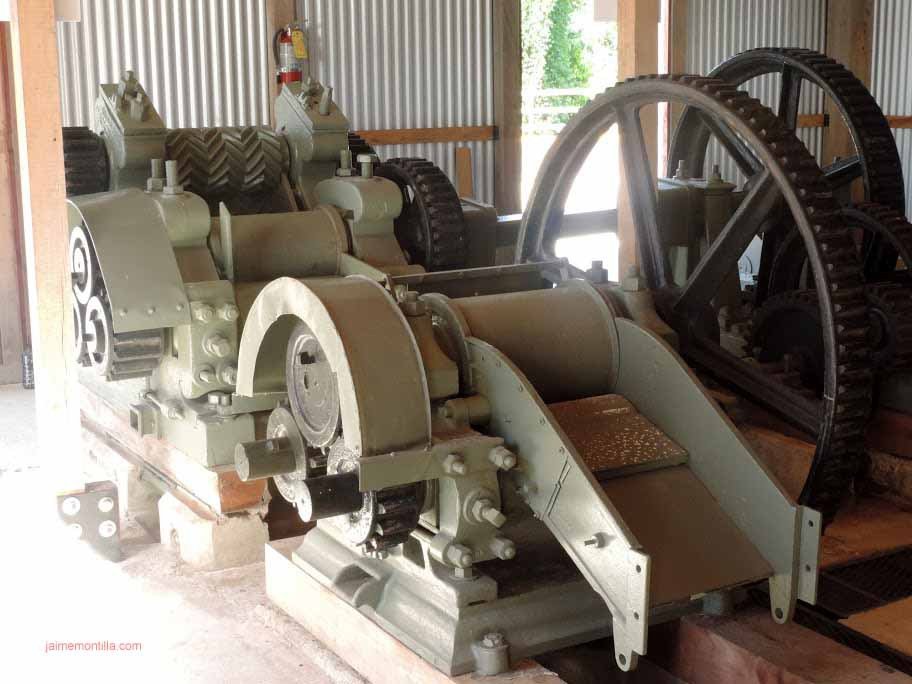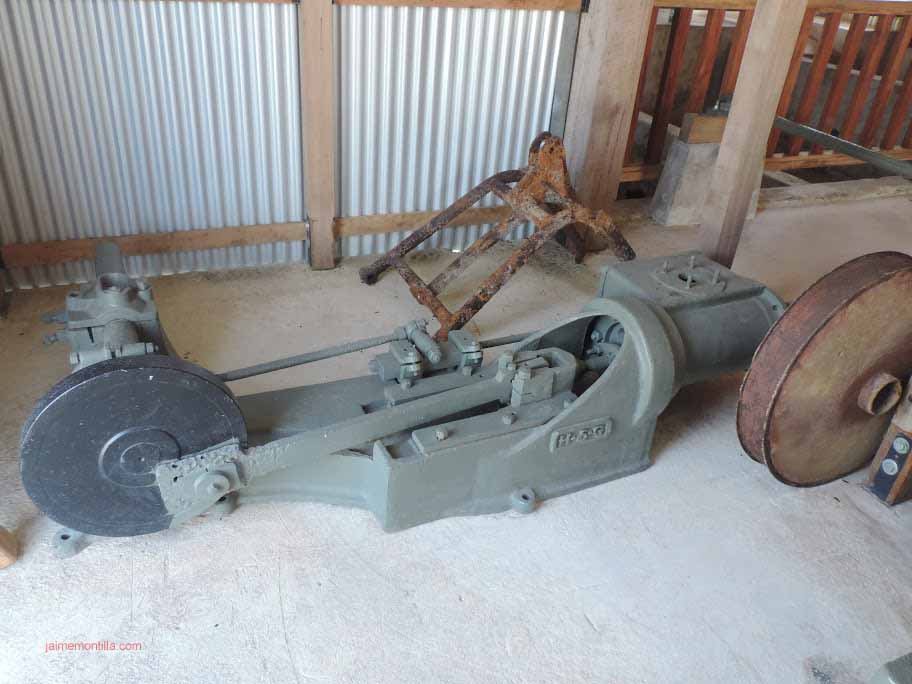
Hacienda La Fé
The beginning of Hacienda La Fé can be traced to 1822 when Juan Bautista Echeandia de Azpiazu ( -1827), an immigrant from the Basque Country in Spain who arrived in Aguadilla in 1821 from Valencia, Venezuela, leased two hundred forty acres in Barrio Baomamey of San Sebastián from Lucas Martinez. After Pedro Antonio's death on June 27, 1828, his widow Isabel Mendoza Estrada (1773-1848) bought the plantation from the heirs of Juliana de Yrunurri, the widow of Lucas Martinez. Isabel and her sons Cecilio and Agustín Echeandia Mendoza started to cultivate sugar cane in addition to coffee, cotton and rice in what was then known as “La Finca Echeandia”. In 1835 the hacienda was leased to Bartolomé Iriarte Echenique, the husband of Rita Echeandia Mendoza, the daughter of Pedro Antonio and Isabel. In 1846 Bartolomé purchased the plantation but lost it in 1854 to foreclosure. The plantation then went through several owners.
According to the book Haciendas Agricolas del Triangulo Noroeste de Puerto Rico by Haydée E. Reichard de Cardona, in 1878 Juan Ramón Sosa Cajigas of Aguada sold a two hundred twenty three acre coffee plantation in Barrio Baomamey of San Sebastián that he had acquired from Eugenio Alers to Pedro Antonio Echeandia Medina (son of Cecilio Echeandia Mendoza) and Victor Martinez . The plantation included a house, a warehouse, a "glácil" and machinery to process coffee all in bad state of disrepair. The last quarter of the 19th Century were very good years for the coffee industry in Puerto Rico. Soon, profits allowed Echeandia Medina to buy out his partner and to acquire additional lands, growing the plantation to one thousand one hundred twelve acres of which two hundred thirty two were used to grow coffee. By 1896 Pedro Antonio Echeandia Medina was the largest land owner in San Sebastián.
Due to the fluctuations and decline in coffee prices during the last few years of the 19th century, Pedro Antonio decided to grow sugar cane and take advantage of the developing sugar industry of the early 1900s. It was Pedro Antonio's son Cecilio Damaso Echeandia Velez who gave the name of La Fé to the hacienda. Cecilio Damaso continued to operate the hacienda until 1920 when its ownership passed on to his son Pedro Antonio Echeandia Font who operated it until 1936 when Angel Abarca Portilla, one of the owners of the nearby Central Plata acquired it. La Fé closed down in 1942 and its sugarcane was then processed at Central Plata.
The Hacienda has been since acquired by the Municipal Government of San Sebastian who operates it as a museum. Behind one of the chimney pictures, you can see the hoist used to unload sugar can from the ox-carts. Among the equipment pictured you can see the mill or "trapiche", the boiler to produce the steam to power the mill and the "volanta" or fly wheel to transfer the power from the boiler to turn the mill. By the size of the machinery as compared to those pictured in La Esperanza and La Igualdad for example, this sugar factory was a small one with limited production.







